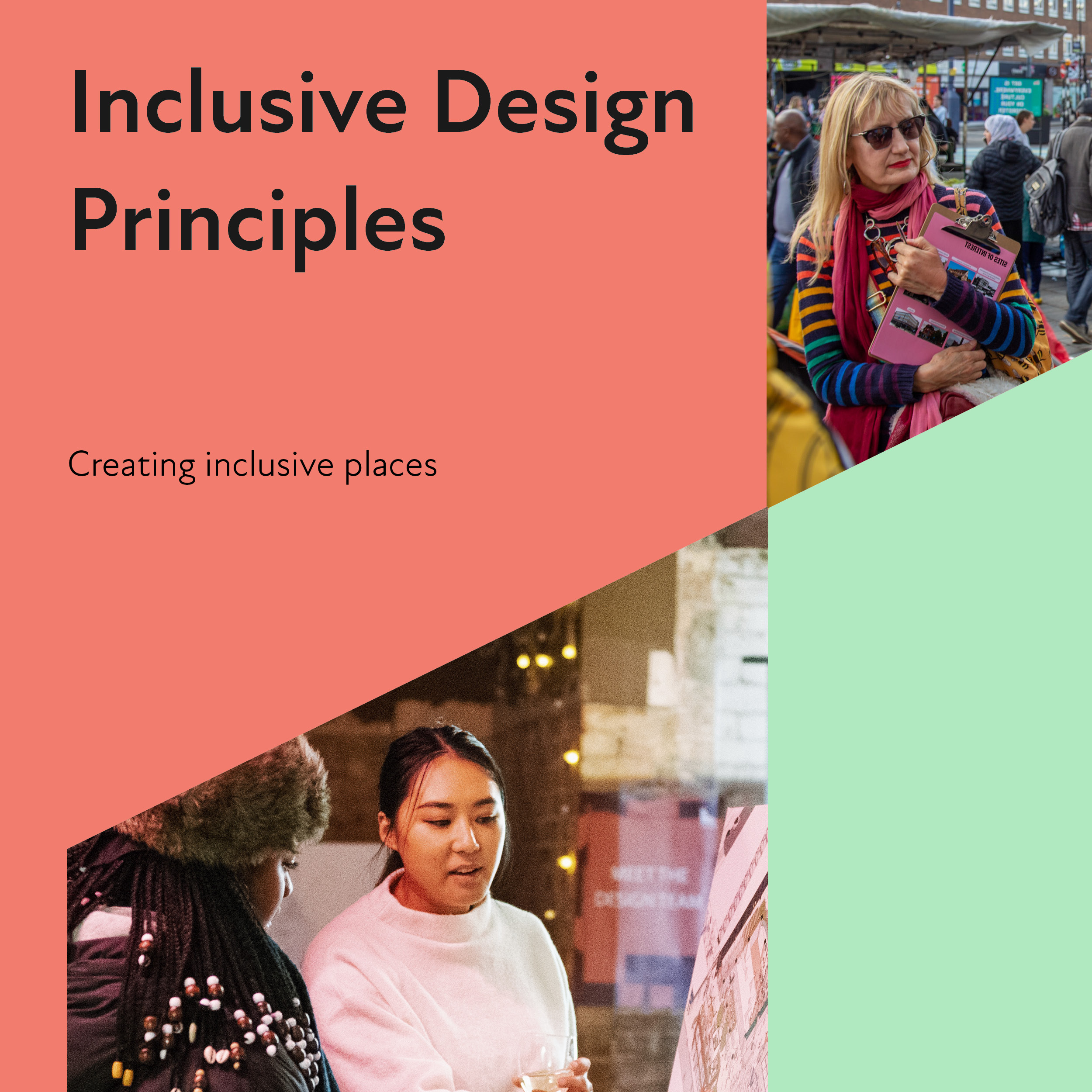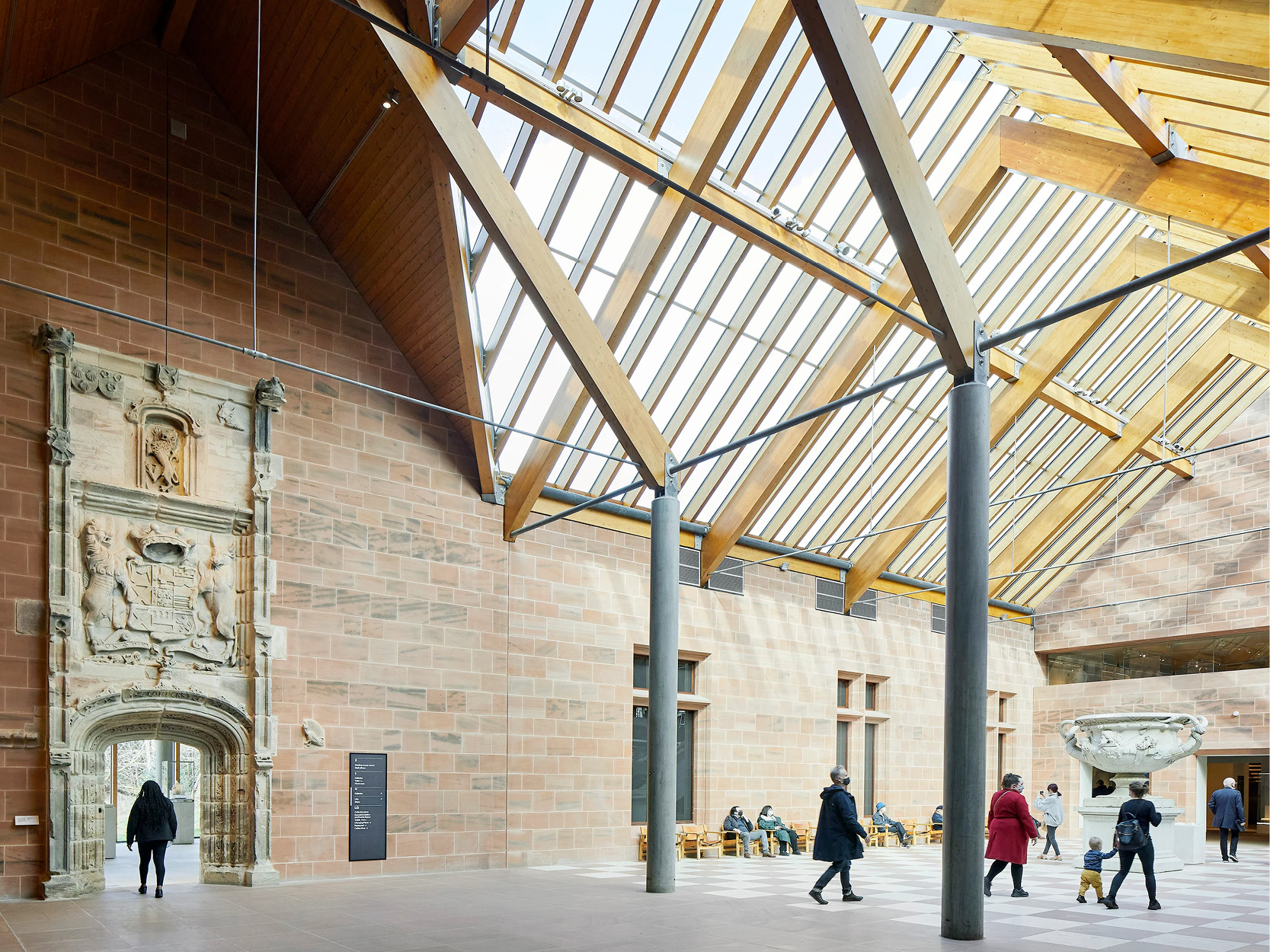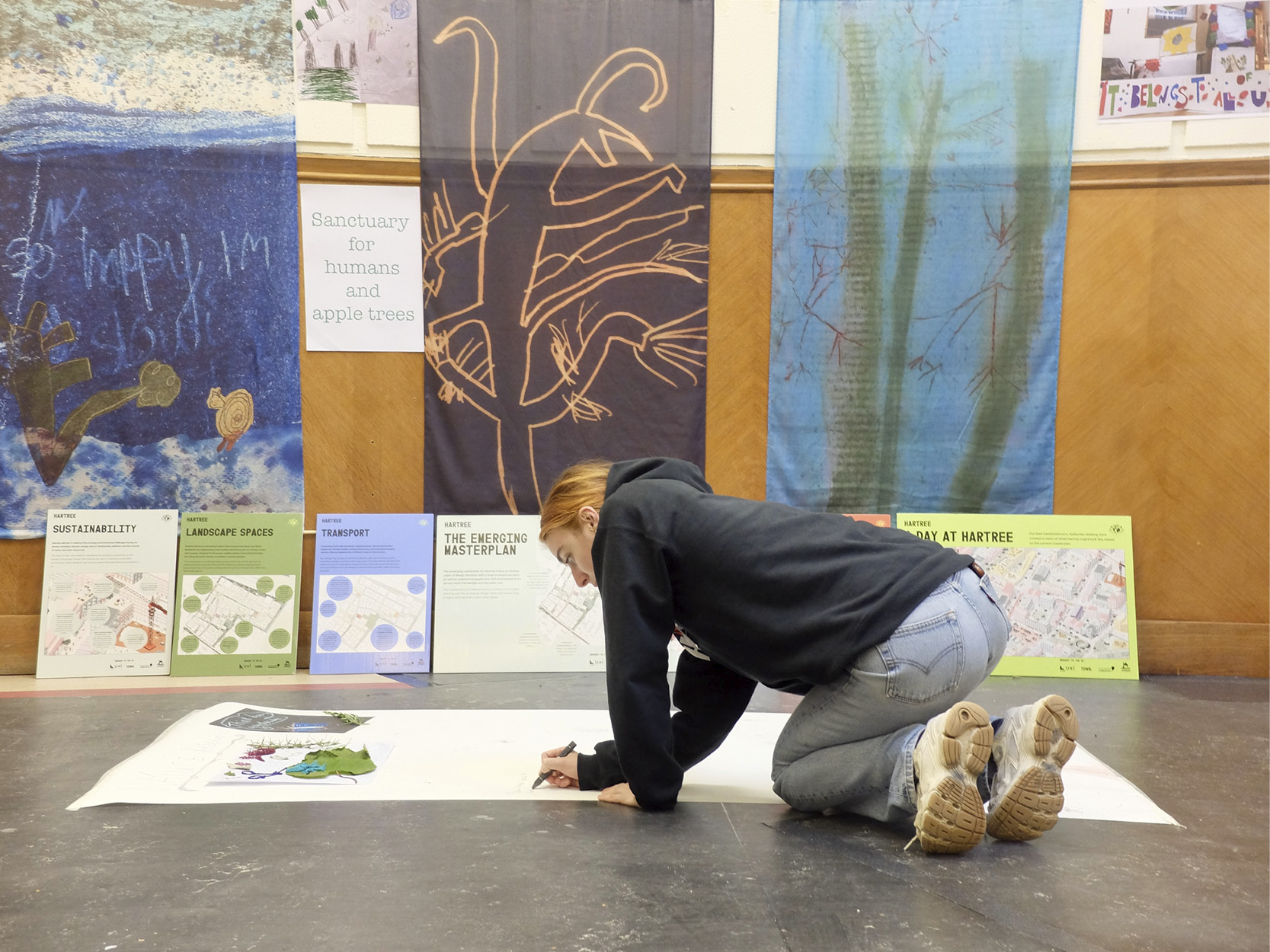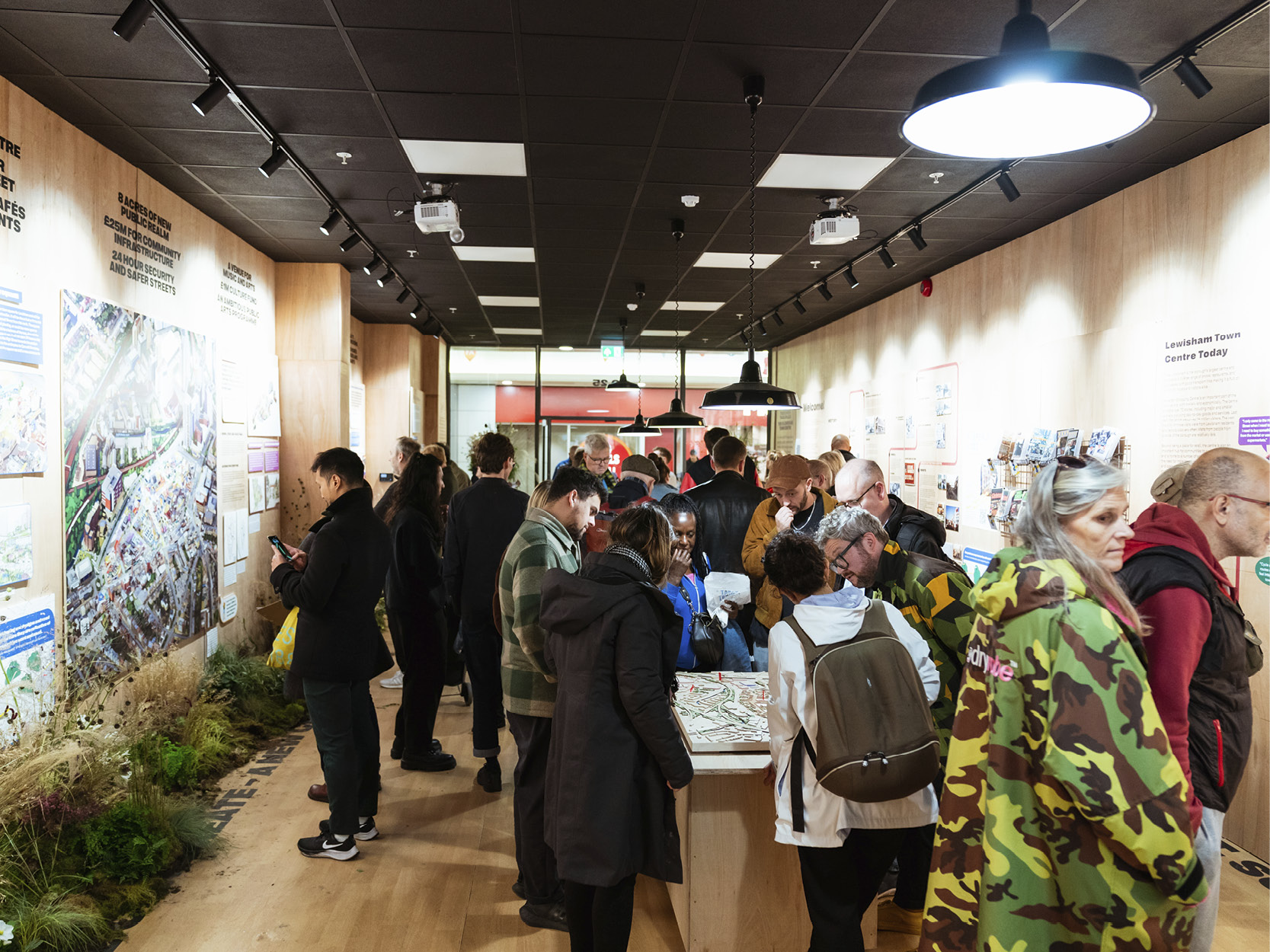


INCLUSIVE DESIGN PRINCIPLES
Creating accessible, useable, and welcoming for spaces for people with diverse needs

Year
2023-2024
Service
Community Interest Company and Research
Client
Landsec
In the UK, nearly 1 in 5 people live with a condition or impairment. For many of these people, the places where they live, shop and work are not designed with diverse needs in mind. Inadequate infrastructure and a lack of universally designed environments create unnecessary barriers, limiting mobility and independence.
Women and minoritised people often navigate public spaces with heightened awareness of personal safety which shapes where they choose to go, how they get there and what time they go there. Research by the Greater London Authority found that 80% of women said they avoid certain areas due to poor lighting and design, which limits their freedom and access to public spaces.
Publica have an ambition to create places that are truly inclusive. Achieving this requires our designs, our way of working and our teams to be aligned with this goal. In collaboration with Landsec, we have developed a set of inclusive design principles that address the places, processes and knowledge and skills required to deliver inclusive spaces.
What is inclusive design?
Inclusive design is the practice of creating spaces that are accessible, useable, and welcoming to people with a wide range of diverse needs, experiences and realities. This approach places people at the heart of the design process. It offers flexible solutions where universal ones aren’t feasible, ensuring spaces accommodate evolving needs.
The following three principles guide our approach:
1 Inclusive places
Design and deliver spaces that are safe and accessible, accommodating diverse needs and experiences. This is not only about physical accessibility, but includes people’s emotional wellbeing, the availability of amenities and activities that meet their needs, and a sense that this space is truly for them.
2 Inclusive processes
Engage people with different lived experiences to ensure their needs are incorporated into all design, delivery and management decisions. This means conducting effective community engagement, supporting participation and leading transparent communication of key decisions. This includes regular action to monitor changing community needs once a space is in-use.
3 Inclusive knowledge and skills
Provide ongoing education and training for teams to understand and deliver inclusive design and operations. Foster a culture of communication, learning, and listening. Ensure a range of perspectives and lived experiences are represented in your teams.



Case study: Accessibility at The Burrell Collection Museum, John McAslan + Partners (Image credit: Hufton + Crow)
What makes a place? Creative consultation workshop involving young people in Cambridge’s Guildhall (Image credit: Cambridge Curiosity and Imagination)
Landsec Lewisham team training (Image credit: Veronika Casarova)
The document provides a framework for designing, developing and managing truly inclusive spaces, offering a set of key actions, relevant case studies and valuable resources to inspire creativity and ambitious thinking. The principles are applicable across Landsec’s diverse and wide-ranging projects, from workplace developments and shopping centres to leisure, retail parks and hotels. It is essential for development and management teams to recognise that some individuals experience more barriers than others, and to actively include those who have previously been excluded.
By understanding diverse needs, we can make informed decisions to create more equitable environments. we acknowledge that to deliver successful places, inclusivity must be considered, and giving our teams, our consultants and our service partners the inspiration and tools to help deliver on this commitment.
INCLUSIVE DESIGN PRINCIPLES
Creating accessible, useable, and welcoming for spaces for people with diverse needs

Year
2023-2024
Service
Community Interest Company and Research
Client
Landsec
In the UK, nearly 1 in 5 people live with a condition or impairment. For many of these people, the places where they live, shop and work are not designed with diverse needs in mind. Inadequate infrastructure and a lack of universally designed environments create unnecessary barriers, limiting mobility and independence.
Women and minoritised people often navigate public spaces with heightened awareness of personal safety which shapes where they choose to go, how they get there and what time they go there. Research by the Greater London Authority found that 80% of women said they avoid certain areas due to poor lighting and design, which limits their freedom and access to public spaces.
Publica have an ambition to create places that are truly inclusive. Achieving this requires our designs, our way of working and our teams to be aligned with this goal. In collaboration with Landsec, we have developed a set of inclusive design principles that address the places, processes and knowledge and skills required to deliver inclusive spaces.
What is inclusive design?
Inclusive design is the practice of creating spaces that are accessible, useable, and welcoming to people with a wide range of diverse needs, experiences and realities. This approach places people at the heart of the design process. It offers flexible solutions where universal ones aren’t feasible, ensuring spaces accommodate evolving needs.
The following three principles guide our approach:
1 Inclusive places
Design and deliver spaces that are safe and accessible, accommodating diverse needs and experiences. This is not only about physical accessibility, but includes people’s emotional wellbeing, the availability of amenities and activities that meet their needs, and a sense that this space is truly for them.
2 Inclusive processes
Engage people with different lived experiences to ensure their needs are incorporated into all design, delivery and management decisions. This means conducting effective community engagement, supporting participation and leading transparent communication of key decisions. This includes regular action to monitor changing community needs once a space is in-use.
3 Inclusive knowledge and skills
Provide ongoing education and training for teams to understand and deliver inclusive design and operations. Foster a culture of communication, learning, and listening. Ensure a range of perspectives and lived experiences are represented in your teams.
The document provides a framework for designing, developing and managing truly inclusive spaces, offering a set of key actions, relevant case studies and valuable resources to inspire creativity and ambitious thinking. The principles are applicable across Landsec’s diverse and wide-ranging projects, from workplace developments and shopping centres to leisure, retail parks and hotels. It is essential for development and management teams to recognise that some individuals experience more barriers than others, and to actively include those who have previously been excluded.
By understanding diverse needs, we can make informed decisions to create more equitable environments. we acknowledge that to deliver successful places, inclusivity must be considered, and giving our teams, our consultants and our service partners the inspiration and tools to help deliver on this commitment.